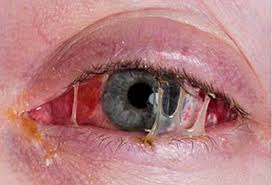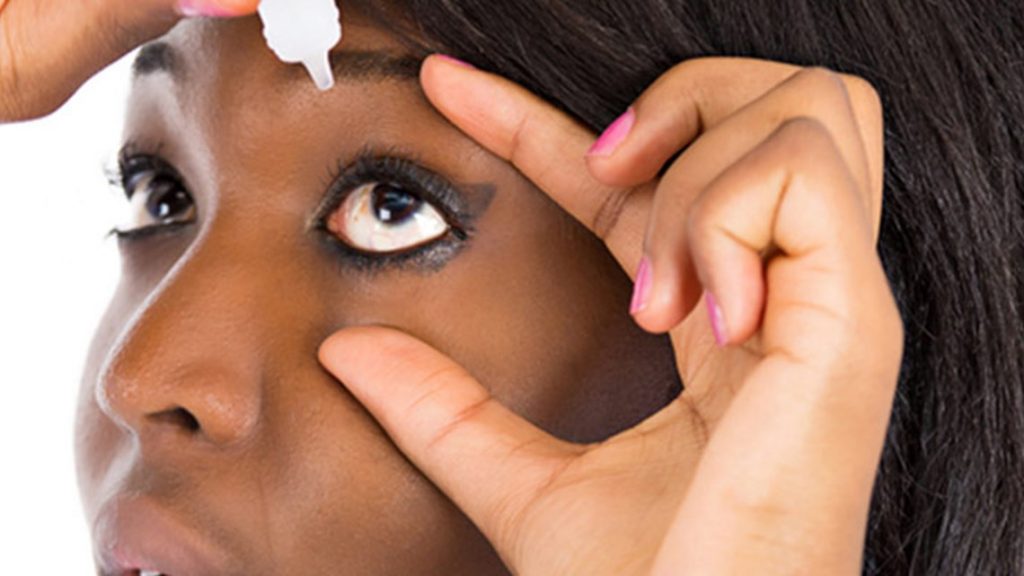
Conjunctivitis (Apollo): red eye, Causes, Symptoms, Treatment
Conjunctivitis popularly known as “Apollo” is a very common disease of the eye in our environment. I could remember when growing up as a child, and a lot of children would turn up in school with a swollen red eye that sometimes discharges, and a lot of tears come out. Those days in Lagos, Nigeria, we only know this condition as “Apollo” and when we see someone that has it, we try to shy away so that we do not contact it from them.
Sometimes, the teachers would advise those who have the disease to stay at home, so as not to possibly infect other children at school. This still happens today, and a lot of people wonder what causes this red & swollen eyes. This is what we would be talking about.
Table of Content
- Why is it called Apollo
- What is Conjunctivitis
- Types of Apollo
- Causes of Apollo
- How is Apollo Spread
- High Risk Groups
- Symptoms of Apollo
- Treatment for Apollo
- How to Prevent Apollo
Why is it called Apollo
The disease was named Apollo 11 disease in 1969 after the NASA Space mission that took place the year the disease was identified as a means of remembering the year.
Apollo is a seasonal disease, commonly occurring mostly during the harmattan periods. It can happen in both children and adults, although it is more commonly seen in Children, and contrary to what people say then, it cannot be transmitted by looking at the eyes of someone with the disease.

What is Conjunctivitis
Conjunctivitis, commonly called “red/pink eye” is a disease condition of the eye that occurs when a protective covering of the eyes, known as the Conjunctiva is inflamed (swollen).
The conjunctiva is like a nylon (transparent layer) covering the white side of the eyes, and inside the eye lids.
This swelling of the conjunctiva can be caused by different things like; infection by viral or bacterial agents, as well as allergies to common things.
When you contact this disease, your eyes would become red and swollen (inflamed), and sometimes you might have a sticky discharge. That’s why when you wake up in the morning, you find that your eyes are stuck and that it is difficult to open your eyes.
You can have conjunctivitis in one or both eyes and some types are very contagious (can be easily spread from one person to another).
Types of Conjunctivitis
There are three common types of conjunctivitis:
- Viral conjunctivitis
- Bacterial conjunctivitis and
- Allergic conjunctivitis.
Viral type is the commonest of the 3.
Causes of Conjunctivitis/How do you get Apollo
Viral conjunctivitis: for viral apollo, it is caused by a viral agent, the same virus that causes the runny nose and sore throat that we see in common cold.
Bacterial conjunctivitis: Bacterial infections cause apollo that produces lots of sticky pus in the eye.
Some bacterial infections, however, may cause little or no discharge.
Example of bacteria that can cause apollo are; gonorrhea,
Allergic conjunctivitis: This happens when the inflammation (swelling) occurs as a result of a reaction to substances in the environment such as pollen or animals fur. Other examples of irritants that cause allergic apollo are cigarette smoke, car fumes, chlorine used for pool treatment or other toxic substances. Allergic apollo is not contagious. Read more about allergic conjunctivitis here.
How is Conjunctivitis/Apollo Spread
Both bacterial and viral conjunctivitis can be very contagious. The means of transmission are from hand-to-eye contacts with an infected bodily fluid or with an infected object (like glasses).
Contact with infected eye discharge, tears and respiratory particles can also spread the disease. This is why it is not advisable to use somebody else’s glasses.
High Risk Groups
Children, especially those in day care & nursery schools are the mostly affected groups due to the way they are in very close contacts in these centers in addition to their hygienic practices.
Symptoms of Conjunctivitis/Apollo
Symptoms of Apollo includes;
- Redness of the eyes
- Pain
- Discharge: this can be sticky and is usually seen in bacterial conjunctivitis
- Itching: common feature of allergic conjunctivitis
- Watery/Tearing Eyes

Individuals with the disease would have;
- Swollen eyelids: due to the inflammation (swelling), you may have this feeling as if there is something your eye.
- red, burning, itchy, painful, watery eyes.
- blurry or hazy vision; vision would be a bit blurry due to the swelling.
- increased sensitivity to light
- Pus: in case of bacterial causes, there would be lots of pus, or thick yellowish discharge from your eye.
- Sticky eyes: When you wake up in the morning, you would notice that your eyelids are stuck, and you’d struggle to open them due to the discharge. (usually seen with bacterial conjunctivitis).
Treatment for Conjunctivitis
Treatment for the disease depends on the type of apollo that is present.
- in the cases of viral conjunctivitis, there are no specific treatments. The disease would resolve on its own within a week.
- For bacterial causes, there are antibiotics eye drops containing antibacterial agents that is used in treatment. You should see your opthalmologist for appropriate mediation for you.
- For Allergic conjunctivitis, eye drops can be prescribed to relieve the itch & inflammation. However, the best way to stop the disease is to identify the allergy that is causing it and remove it or simply move away from the environment.
- Chemical induced conjunctivitis: caused by a chemical or other substance in your eye. Simply rinse the eye free of the substance. You can get anti-inflammatory eye drops if symptoms persist.

How to Prevent Conjunctivitis/Apollo
- Always use a clean towel or tissue when you wipe your face and eyes.
- Wash your hands very often: Always wash them before and after you eat, when you go to the bathroom, or after you sneeze or cough. This is even more important with the current Coronavirus pandemic.
- Try not to touch your eyes: If you do, wash your hands right away. This is to avoid spreading it from one eye to the other.
- Avoid sharing glasses or make up attachments (like eyelashes) with others.
- Clean your contact lenses as recommended by the ophthalmologist.
- Avoid putting unprescribed substances (e.g: kerosene, urine, oil, unclean water from any source) in your eyes for whatever reasons. The can worsen your symptoms or even cause damage to your eyes.
If symptoms persist beyond two weeks, see an ophthalmologist for more evaluation.
Feel free to ask any bothering questions you may have on this condition, and i would do my best to answer you as soon as i can.
Leave a reply
Leave a reply